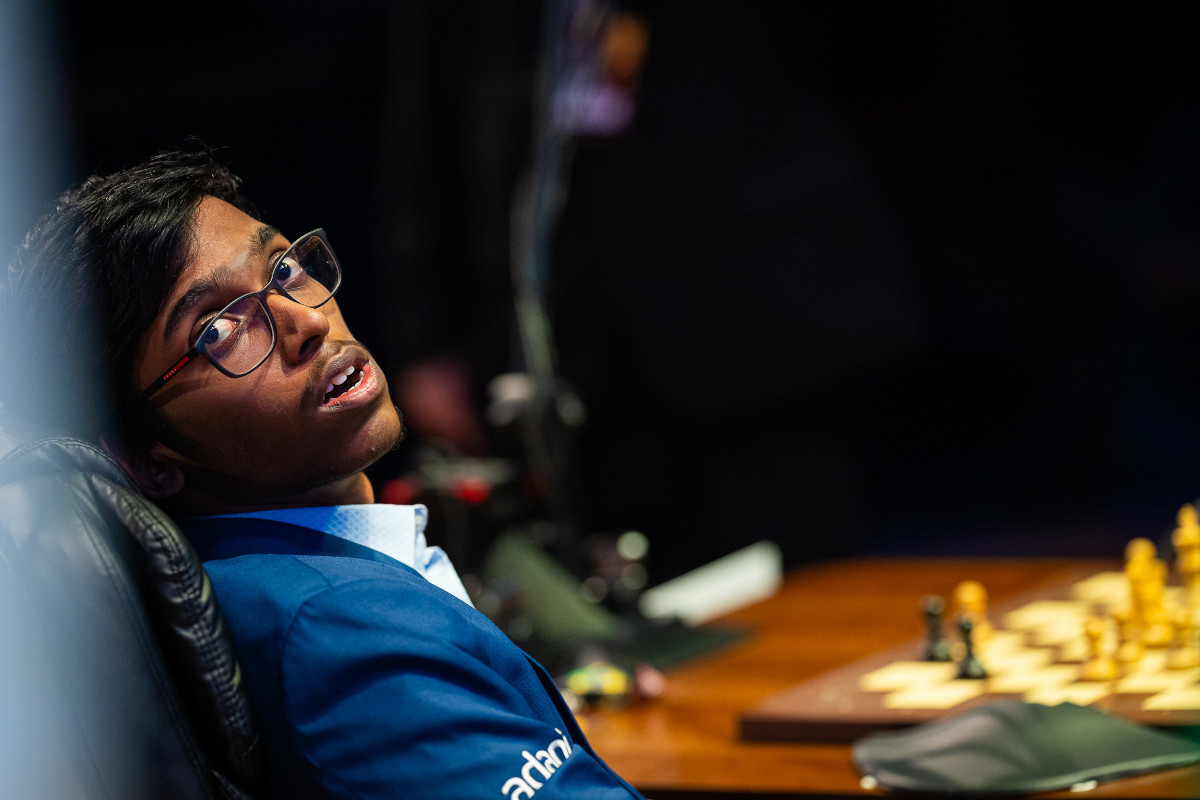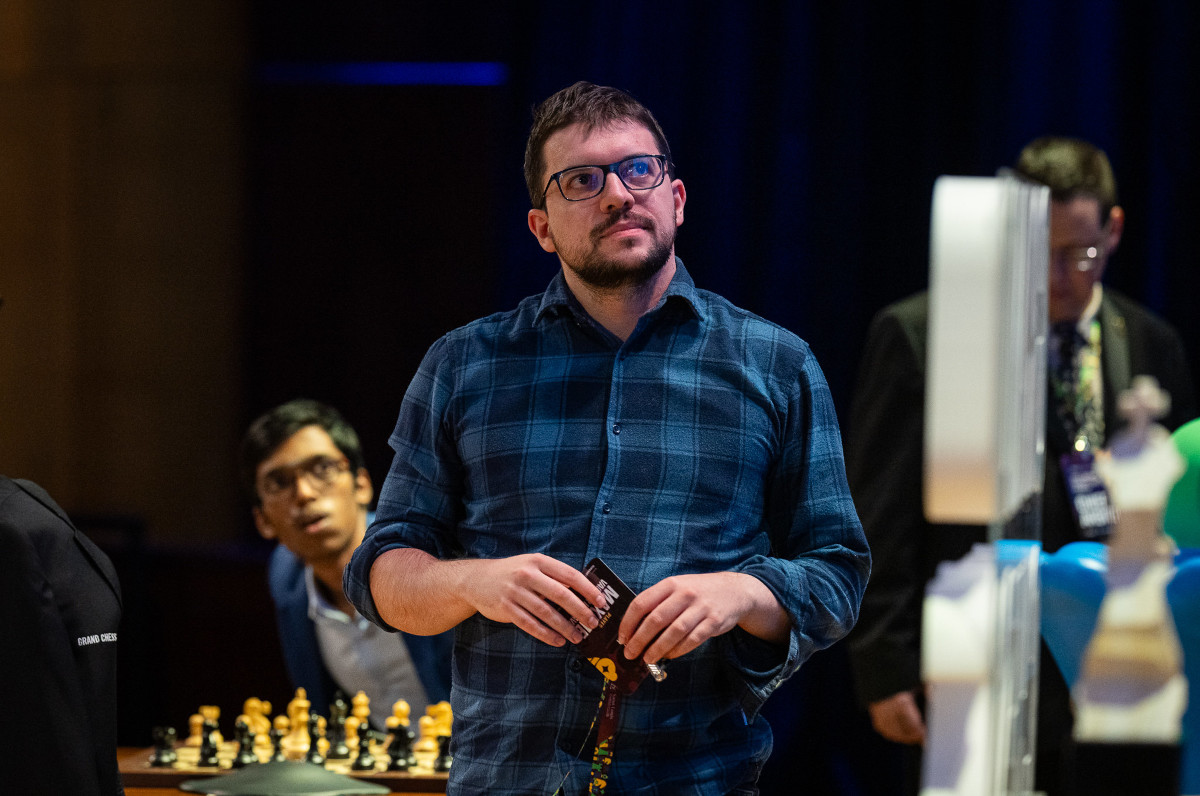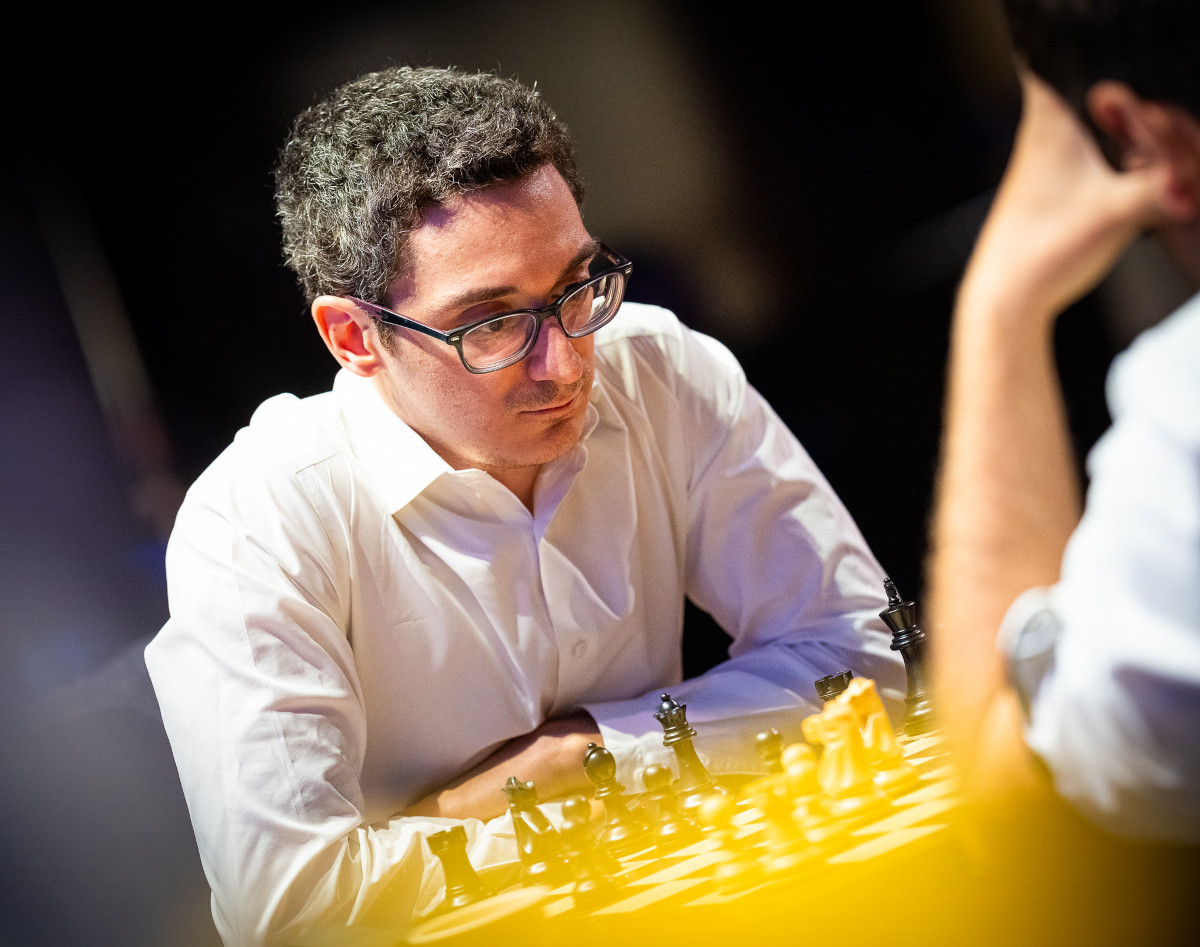Pragg inches away from making a comeback
The rapid games set the tone. In the first, Maxime Vachier-Lagrave had white against Praggnanandhaa Rameshbabu, who repeated the Caro-Kann Defence that had served him well for a quick draw in the second classical encounter. This time, however, the French grandmaster gradually accumulated pressure.
By move 23, already in a difficult position, Pragg played the weakening 23…a5
MVL cemented his space advantage while trading both rooks via 24.b5 Nb8 25.Rxc7 Rxc7 26.Rxc7 Bxc7 27.Nc5 Bd8 28.a4
With much more space across the board and superior coordination, White’s advantage became overwhelming. Vachier-Lagrave’s technique ensured that the Indian grandmaster, despite his defensive resourcefulness, had no chance to escape.

Praggnanandhaa Rameshbabu | Photo: Lennart Ootes
The second rapid game was more sedate, a Queen’s Gambit Declined that saw accurate play by both sides. The game lasted 40 moves before ending peacefully, which meant that MVL carried a four-point advantage into the blitz portion of the match. With four blitz games worth two points apiece remaining, Pragg needed two wins (and no losses) to tie the score.
The first blitz game provided chances for both players. Vachier-Lagrave was close to winning when he failed to find 40.Rg6, intending 40…Ne8 41.Rxh6+ Kg8 42.Rb6, a line that would have left White with a decisive attack. Instead, he chose 40.Ra7, an inaccuracy that gave Black the upper hand.
Pragg, in turn, missed his chance with 40…Kg8, when the stronger 40…b3 would have refuted White’s counterplay – after 41.Nf6 Bb7, Black would be winning. The game ultimately ended drawn after 46 moves.
In the second blitz game, Pragg struck back. Vachier-Lagrave mishandled the opening and soon found himself under pressure. Pragg capitalised with sharp tactical play to score the win, reducing the deficit to two points.

Maxime Vachier-Lagrave | Photo: Lennart Ootes
The third blitz encounter was decisive for the outcome of the match. Pragg played the Sicilian Defence, gained the upper hand and even won an exchange after MVL’s unusual plan with 13.Ra3 followed by 14.Rae3 – a creative but objectively flawed idea.
Despite being down material, MVL demonstrated why he is among the trickiest blitz players at the elite level. His minor pieces worked harmoniously, and once queens were exchanged, his central pawns became a dangerous force.
When White advanced 43.Ke4, the coordination of rook, knight and pawns was overwhelming.
Pragg, low on time and with his position collapsing, resigned after 55…Kc5, as three connected passed pawns dominated the board.
In this insightful video course, Grandmaster David Navara shares practical advice on when to calculate deeply in a position — and just as importantly, when not to.
Free sample video: Introduction
Free sample video: Invisible moves
This result secured the match for MVL, who now had an insurmountable four-point lead with only one blitz game remaining.
Although the match was already decided, the final blitz game was still played as per the regulations. Vachier-Lagrave maintained his momentum and scored another win, closing the match with a 17-11 victory.

All games – MVL v. Pragg
Caruana outscores Aronian in the blitz section
The semifinal between Fabiano Caruana and Levon Aronian followed a slower trajectory. After two short classical draws, the players continued to exchange blows cautiously. Both rapid games were drawn, followed by two further draws in the opening blitz encounters.
Accuracy was high in these games, and Caruana’s experimentation with the King’s Indian Defence – an opening he has not employed regularly in his career – was particularly striking. He later explained that he had studied the system thoroughly and saw the tournament as an opportunity to test it in practice.

Levon Aronian playing white against Fabiano Caruana | Photo: Lennart Ootes
The breakthrough came in the third blitz game. Once again, Caruana chose the King’s Indian with black. At one stage, his rook on b4 was paralysed, yet his position remained preferable. After 22…c6, the position opened up, and White’s king began to feel unsafe on both flanks.
Following 23.dxc6 Bxc6 24.Qc2, Caruana unleashed 24…Rf4
The move looks spectacular, though engines showed it to be inaccurate – the more precise 24…Qe6, with the idea of bringing the queen to g4, would have been stronger.
The tactical refutation of 24…Rf4 involved 25.Nxd6 Qb8 26.Bxf4 exf4 27.e5 (diagram), a line creating a discovered attack on g6, but it was far from obvious in blitz conditions.
Aronian instead continued with 25.Nc3 Rg4 26.0-0-0, and was clearly in trouble. Caruana’s pressure soon told: after 26…Qb8 27.Kb2 Rxc4 28.Rd2 Bxe4, Black’s initiative was unstoppable.
Aronian resigned seven moves later.

Fabiano Caruana | Photo: Lennart Ootes
The Classical Sicilian has stood the test of time as one of the most principled and fighting defences against 1.e4. With its rich history spanning world championship matches and modern elite tournaments, this opening remains a favourite among players who seek a dynamic, counterattacking approach without venturing into extreme theoretical battles like the Najdorf or Sveshnikov.
Free video sample: Introduction
Free video sample: 6.h3
The fourth blitz game placed Aronian in a must-win situation. He chose the Pirc Defence in an attempt to create an unbalanced struggle. However, Caruana kept control and exploited Aronian’s overly risky choices to obtain a superior position.
In practical terms, though, Caruana had no reason to press unnecessarily: when the chance of a repetition arose, he took it, thereby securing match victory. The final score was 15-13 in Caruana’s favour.

